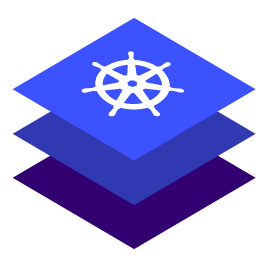vSphere: Create a Managed Cluster Using the DKP CLI
Creating a vSphere Managed cluster with the DKP CLI assumes that you already fulfilled all of the prerequisites and successfully created a vSphere Management cluster. Use this process and its procedures to create a Managed vSphere cluster.
When creating Managed clusters, you do not need to create and move CAPI objects, or install the Kommander component. Those tasks are only done on Management clusters!
The procedures to follow for creating a managed vSphere cluster from the DKP CLI include:
Choose a Workspace for the New Managed Cluster
If you have an existing Workspace name, run this command to find the name:
⚠️ NOTE: If you need to create a new Workspace, follow the instructions to Create a Workspace.CODEkubectl get workspace -AWhen you have the Workspace name, set the
WORKSPACE_NAMESPACEenvironment variable:CODEexport WORKSPACE_NAMESPACE=<workspace_namespace>
Name your Cluster
Use an environment variable to contain your managed cluster’s name to make working with later YAML files and CLI commands easier.
Give your cluster a unique name suitable for your environment.
Set the CLUSTER_NAME environment variable with the command:
CODEexport CLUSTER_NAME=<my-managed-vsphere-cluster-name>
Create a New vSphere Kubernetes Cluster
DKP uses local static provisioner as the default storage provider. However, localvolumeprovisioner is not suitable for production use. You should use a Kubernetes CSI compatible storage that is suitable for production.
You can choose from any of the storage options available for Kubernetes. To disable the default that Konvoy deploys, set the default StorageClasslocalvolumeprovisioner as non-default. Then set your newly created StorageClass to be the default by following the commands in the Kubernetes documentation called Changing the Default Storage Class.
Follow these steps to create the cluster:
Use the following command to set the environment variables for vSphere:
CODEexport VSPHERE_SERVER=example.vsphere.url export VSPHERE_USERNAME=user@example.vsphere.url export VSPHERE_PASSWORD=example_passwordEnsure your vSphere credentials are up-to-date by refreshing the credentials with the command:
CODEdkp update bootstrap credentials vsphereGenerate the Kubernetes cluster objects by copying and editing this command to include the correct values, including the VM template name you assigned in the previous procedure:
To increase Dockerhub's rate limit use your Dockerhub credentials when creating the cluster, by setting the following flag
--registry-mirror-url=https://registry-1.docker.io --registry-mirror-username= --registry-mirror-password=on thedkp create cluster command.The following example shows a common configuration. See dkp create cluster reference for the full list of cluster creation options:
The command to create a basic vSphere managed cluster is:
dkp create cluster vsphere \
--cluster-name ${CLUSTER_NAME} \
--network <NETWORK_NAME> \
--control-plane-endpoint-host <xxx.yyy.zzz.000> \
--data-center <DATACENTER_NAME> \
--data-store <DATASTORE_NAME> \
--folder <FOLDER_NAME> \
--server <VCENTER_API_SERVER_URL> \
--ssh-public-key-file <SSH_PUBLIC_KEY_FILE> \
--resource-pool <RESOURCE_POOL_NAME> \
--vm-template <TEMPLATE_NAME> \
--virtual-ip-interface <ip_interface_name> \
--namespace ${WORKSPACE_NAMESPACE}If your environment uses HTTP/HTTPS proxies, you must include the flags --http-proxy, --https-proxy, and --no-proxy and their related values in this command for it to be successful. More information is available in Configuring an HTTP/HTTPS Proxy.
Manually Attach a DKP CLI Cluster to the Management Cluster
Find out the
nameof the createdCluster, so you can reference it later:CODEkubectl -n <workspace_namespace> get clustersAttach the cluster by creating a
KommanderCluster:CODEcat << EOF | kubectl apply -f - apiVersion: kommander.mesosphere.io/v1beta1 kind: KommanderCluster metadata: name: <cluster_name> namespace: <workspace_namespace> spec: kubeconfigRef: name: <cluster_name>-kubeconfig clusterRef: capiCluster: name: <cluster_name> EOF
If you have existing clusters or want to create other new, managed clusters to attach, there are many ways to attach a cluster with various requirements and restrictions. To see all the options, visit the section, Day 2 - Attach an Existing Kubernetes Cluster.
Next Steps:
At this point, you can:
Create more clusters, by following this procedure again
Perform other configuration tasks
Proceed to Day 2 Operations.
